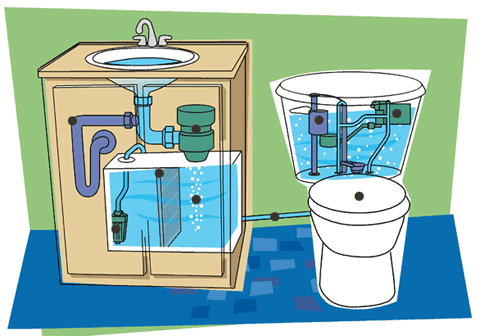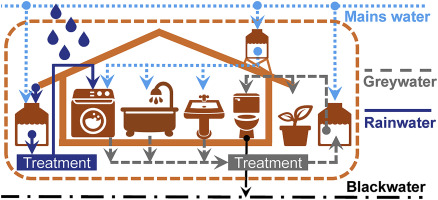How to Set Up a Home Greywater Recycling System

Recycling greywater at home is an eco-friendly way to conserve water and reduce your utility bills. Greywater is the relatively clean wastewater from baths, sinks, washing machines, and other kitchen appliances, excluding toilet waste. Setting up a greywater recycling system involves several key steps and considerations to ensure safety, efficiency, and compliance with local regulations.
What is Greywater Recycling?
Greywater recycling involves collecting, treating, and reusing water from household sources for non-potable purposes such as irrigation and toilet flushing. This reduces the demand for fresh water and helps in sustainable water management.
Benefits of a Home Greywater Recycling System
- Water Conservation: Significantly reduces freshwater consumption.
- Lower Water Bills: Decreases the volume of water you need to purchase.
- Environmental Impact: Reduces strain on sewage treatment plants and local water bodies.
- Gardening Support: Provides nutrient-rich water ideal for plants.
Step-by-Step Guide to Setting Up Your System
| Step | Description |
|---|---|
| 1. Assess Your Water Usage | Identify sources of greywater in your home and estimate daily volume. |
| 2. Check Local Regulations | Ensure compliance with laws regarding greywater use and installation. |
| 3. Choose a System Type | Decide between simple gravity-fed systems or more complex filtered and pumped systems. |
| 4. Install Collection Pipes | Redirect greywater from sinks, showers, and washing machines to a storage tank or directly to irrigation. |
| 5. Implement Filtration | Use filters to remove hair, lint, and debris to prevent clogging. |
| 6. Storage and Treatment | Store greywater in tanks with proper treatment to avoid odors and bacterial growth. |
| 7. Distribution System | Set up irrigation lines or toilet flushing connections to reuse the treated greywater. |
| 8. Maintenance | Regularly clean filters and tanks to maintain system efficiency and hygiene. |
Types of Greywater Systems
- Simple Diverter Systems: Redirect water directly to garden beds without treatment.
- Filtration Systems: Include filters to clean water before reuse.
- Pump Systems: Use pumps to move water to storage or irrigation points.
- Automated Systems: Incorporate sensors and controls for optimized water use.
Safety and Maintenance Tips
- Avoid using greywater on edible plants unless properly treated.
- Use biodegradable, low-toxicity soaps and detergents.
- Regularly inspect and clean the system components.
- Monitor for any leaks or blockages.
Frequently Asked Questions (FAQ)
Q1: Can I use greywater for drinking?
No, greywater is not safe for drinking without extensive treatment.
Q2: What household sources produce greywater?
Sinks, showers, bathtubs, and washing machines.
Q3: How often should I maintain my greywater system?
Maintenance should be done monthly or as recommended by the system manufacturer.
Q4: Is a permit required to install a greywater system?
Permit requirements vary by location; always check with local authorities.
Conclusion
Setting up a home greywater recycling system is a practical step towards sustainable living. By following the outlined steps and maintaining your system properly, you can conserve water, save money, and contribute positively to the environment.
For more detailed guidance, consider consulting with a professional plumber or water conservation expert to tailor the system to your home’s specific needs.
